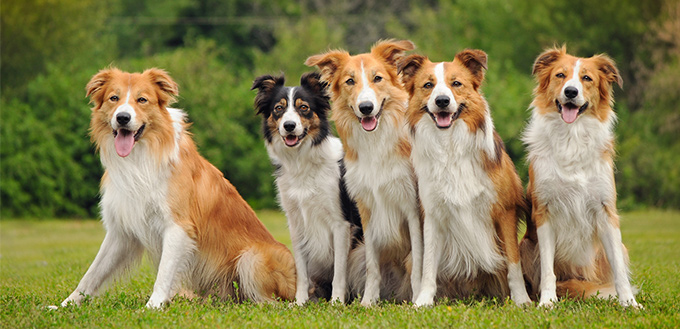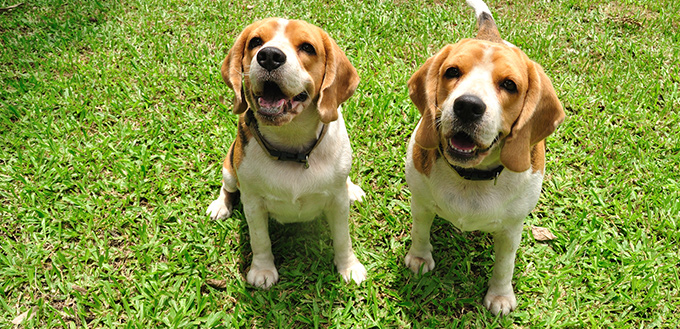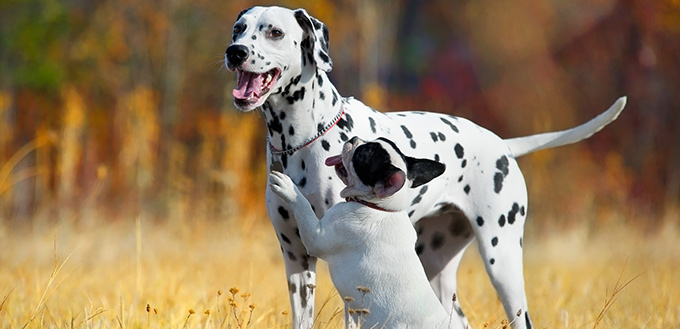Early socialization is an important aspect of caring for canines. After all, they’re one of the most social animals on the planet. While you may be the most important person in your dog’s life and it can truly appreciate the time you spend with it, there are some things that only fellow dogs can provide. This is why dog playdates are important. But how do you create the perfect dog playdate? Here’s how.
Know Your Dog’s Temperament
Perhaps the most crucial aspect to creating the perfect canine playdate is knowing the temperament of your dog. It is important to understand that the playdate is a chance for your dog to meet and enjoy playtime with another dog that it doesn’t really see very often. The question here is related to the level of confidence of your dog especially when around other dogs and new people.
Does your dog like interacting socially with other dogs? How comfortable is your dog about dog-to-dog play? Does your dog display possessiveness when it comes to its resources especially when other dogs are around? These are just some of the questions that you may have to ask yourself before actively seeking out a playdate for your pet.
If you’re doubtful about your pet’s temperament, you may need to work on this first before taking your hound out on a playdate.

Find a Willing Playdate
If you’re confident in your dog’s temperament, the next step would be to find a willing playdate. We really cannot say the ‘perfect’ playdate since you’ve got to let them meet first. There are several options when looking for a playdate for your pet.
Friends are always the best and safest places to start looking for playdates. If your friends have pet dogs, then you’ll feel more confident about letting your dog mingle with theirs. At the very least, you don’t have to establish any rapport with the dog’s owner since he or she is already a friend.
You can also try obedience training classes and even puppy kindergarten or preschool classes. Many pet parents would love to extend the socialization of their dogs outside the class. You can talk to them or perhaps ask the dog class instructor to announce to the class your request.
Co-workers can also be excellent sources of your pet’s playdate. The good thing about this is that you’ll also get to know your officemate a lot better. Your neighbors may also help and you can start by striking a conversation with them. Your veterinarian may also have a list of patients who love bringing their pets on a playdate. You can ask him for referrals, too. Dog trainers and dog groomers also interact with pet parents. They may have an idea of dog lovers who also like the idea of dog socialization.
You can also bring your pet to the dog park. You can look at how your pet behaves and perhaps strike a conversation with the other pet parents in the park. Some of them may want to bring their pets to a more relaxed environment. This can be an exciting opportunity for a playdate. You can also attend dog-related activities where pet parents are never shy showing off their dogs.
There are also websites and apps that cater specifically to dog playdates. You can also create your own community of pet parents who love taking their dogs on a playdate.
Start on Neutral Territory
Even if your dog is well-behaved, there really is no guaranteeing that its playdate will be the same. It is important to meet and greet the playdate on neutral territory, but with less competition. Looking for a place that the two dogs can meet and interact as ‘new acquaintance’ can be difficult.
Obviously, the dog park no longer qualifies, although it’s neutral territory. There are way too many dogs in the park that it would be virtually impossible to have a playdate for just two dogs. Ask the other pet parent to walk with your dog. It could be around the neighborhood or perhaps in a section of a public park where dogs are allowed.
Allowing dogs to walk side-by-side gives them the chance to get comfortable with each other without distractions and without competition from other dogs. If you can get them to walk in an area that they have never been to before, this can help promote exploratory behavior. They will smell the same patch of grass or perhaps even urinate on the same spot. This will help facilitate bonding and social ease.
Preferably, dogs should be allowed to explore off-leash. But, if this is not possible, then having them on a leash should be just fine. The point here is to start on a neutral territory that can offer them plenty of sensory distractions. This will help encourage seeking behavior which is the foundation for playing together.
You May Also Like: Dog Leashes

Make the Playdate Area Neutral
Once your pet and its playdate have already formed a bond, it’s time to bring them home. However, even before you lead the two dogs into your home, make sure that you have already removed any object that your dog might consider its own. These can include its favorite dog toys, food bowl, water bowl, dog bed, and other stuff for which it may become overly possessive.
You May Also Like: Dog Bowls
It often makes perfect sense to start the playdate in your yard first before allowing them to move into your house. Again, you need to remove all things that your dog might associate as its territory. Allow both dogs to explore your backyard. Let them sniff a variety of objects. It’s more like a continuation of their initial playdate outside the home.
However, since your backyard is actually an extension of your home, your dog understands that this is technically its territory. Allowing them to play and interact right in your backyard will give you the opportunity to assess whether your dog is comfortable sharing its ‘territory’ with another dog.
Watch both dogs for any sign of tension. This can include posturing or even body stiffness. If you observe such behavior, make sure to address these first by calming them down. If they are relaxed and calm and are interacting confidently without being aggressive, be ready with your praises.
Don’t force your dog to interact with the other dog. Even us humans get to choose who we want to mingle or interact with. Sadly, dogs cannot verbalize the type of dog that they would like to play and spend time with. If your pet backs away or shows avoidance, it usually means that it is uncomfortable with the other dog. It is also possible that your dog is simply not in the mood to interact with the other dog at this time.
Be Mindful of Body Language during Play
Dogs can get really rowdy when playing with other dogs. However, there are instances when pet parents interrupt the play simply because the interaction is considered to have turned into unwanted aggression. There are also instances when pet parents totally ignore the dog play that is already becoming a safety issue. The problem here is that some pet parents are simply not keen enough in observing and interpreting their dogs’ body language. It is, therefore, very important for pet parents to keep a watchful eye on the body language of both dogs especially during the play process.
If one of the dogs is playing rather rough and the other is showing signs of uneasiness or discomfort, it is imperative that you separate them for several minutes. This will help temper the hyper-excitement of one dog and the obvious displeasure of the other. Take your cue from both dogs. If both appear calm and relaxed, then you can let them resume their play.
Be especially mindful of canine body language that indicates your dog is already stressed out. For instance, if it is already showing its teeth with a discernible growl, it usually means your dog is already fed up with the rough playing of the other dog. Some dogs may also cower or move back or hide under the couch or the bed. Having its tail down and between its legs can also mean your dog is already under extreme stress. Be mindful of these signs as your dog is dependent on you to break the interaction.

Provide Hydration Breaks
Play can really make dogs thirsty. That’s why it is imperative that you also provide hydration breaks for both hounds. However, you should provide another water bowl for the other dog. Don’t let it use your dog’s water bowl as this can precipitate resource guarding in your dog. The good news is that if the social interaction between the two dogs went smoothly, both may actually drink from the same bowl.
Creating the perfect playdate for your dog isn’t really easy especially for first-time pet parents. One’s knowledge of his or her dog’s temperament and socialization skills can lay the foundation for a more successful dog playdate. Like all social interactions, it is best to start slow and build from there.
Sources:
- How to Introduce Dogs, Animal Humane Society
- 5 Reasons to Throw Your Dog a Birthday Party, Michelson Found Animals
- Activities For Friendly Dogs, Wag






